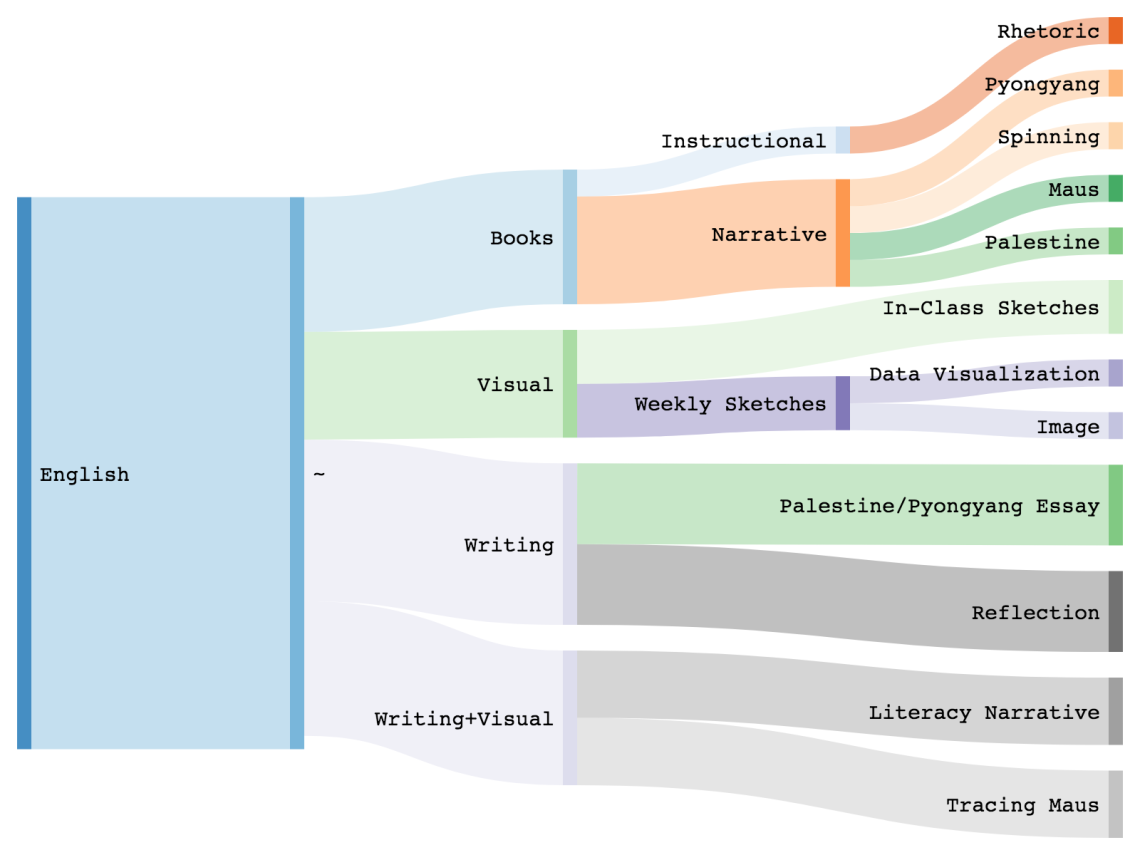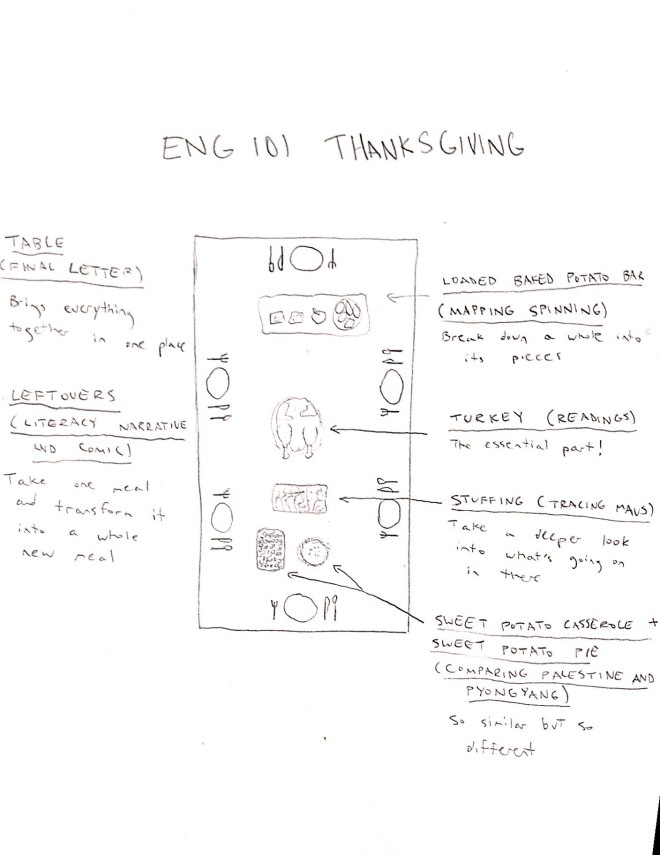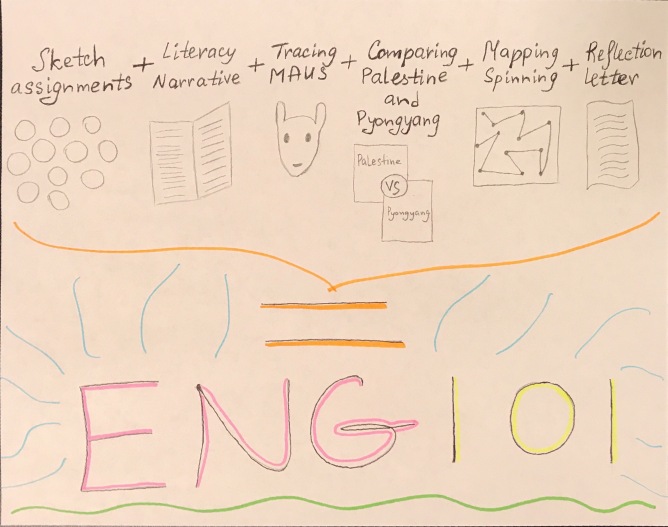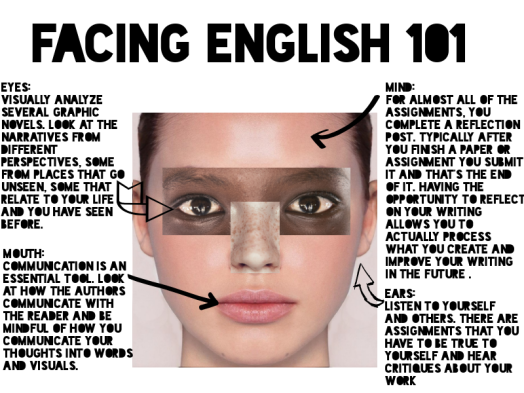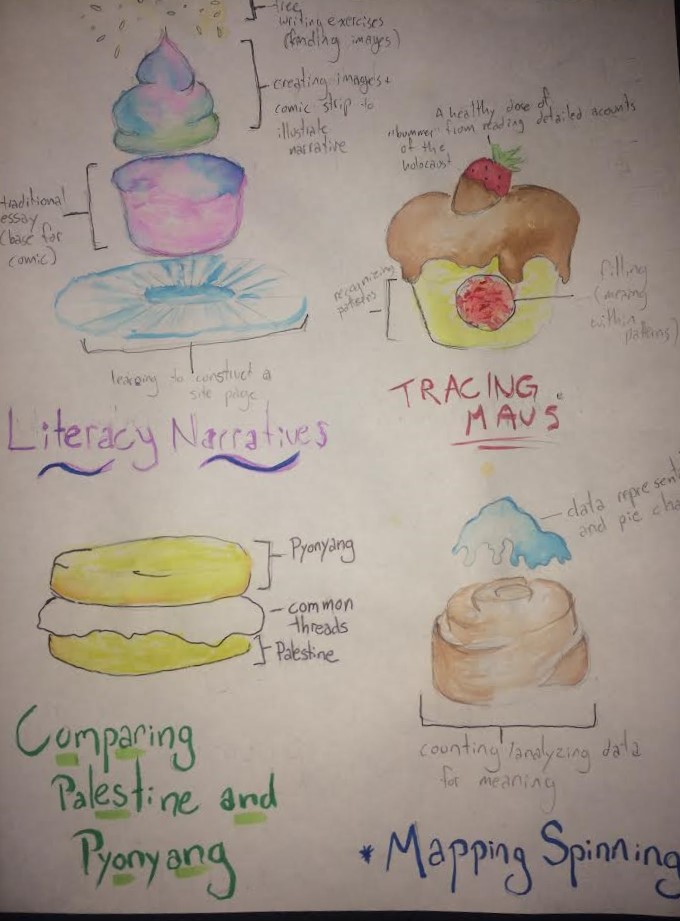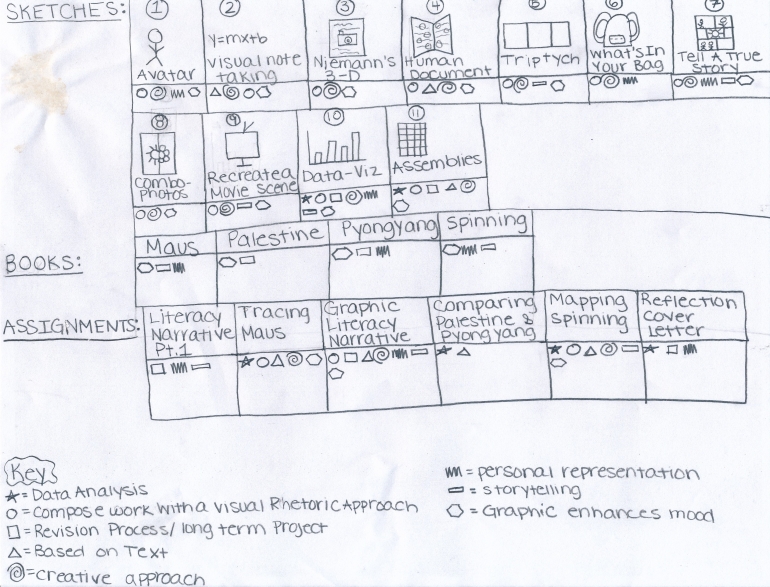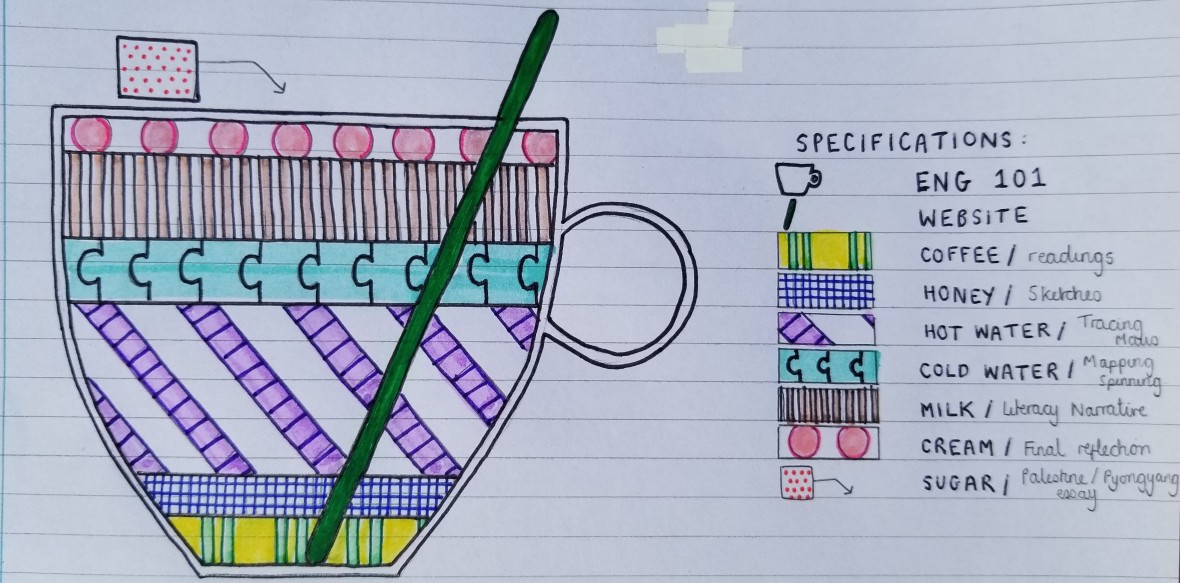
For my sketch assembly, I chose to represent the work I’ve completed this semester as a cup of coffee. Part of this is just because coffee is an easy drink to break up into parts, but I could also say that coffee is something that I hated and would never drink before the semester began, but I started to drink it much more frequently as the semester went on, and I actually don’t mind it now. This is similar to my relationship with English classes. I had never really enjoyed an English class before this year, but now that I have tried lots of different forms of writing, I have found some types that I actually quite like.
Within the coffee cup (which represents this English course as a whole), I have the instant coffee that you put in right at the bottom. The coffee granules are supposed to represent the readings that we completed over the semester. Not only does this include the main books that we read, but also our textbook readings from the beginning of the course. All of our readings formed the course foundations, as we based a lot of our other work off these. Next I put in honey, which is supposed to represent the sketches that we did in class, and every Sunday. The sketches were some of my favourite parts of this semester, and honey adds a nice sweet element to the cup of coffee. After this comes the hot water, or Tracing Maus. This was quite a big assignment and so makes up a large amount of the cup. It also brought together a lot of the other elements (it included drawing, reading, and written analysis), and so was a fundamental part of the course. I then added cold water which represents Mapping Spinning. Sometimes you need to add cold water so that you can drink the coffee straight away without it burning your mouth. In a similar way, Mapping Spinning was some light relief for me near the end of the semester as I could do a more mathsy based, rater than written based assignment, and enjoy it more. On top of the water, we have milk (and my Literacy Narrative). I would say that the Literacy Narrative was the second biggest project this semester, and it was also a really important part of the course for me, as I was able to discover a new, visual approach to writing, which I had never tried before. Just like milk is crucial to a cup of coffee, the literacy narrative was so important in my writing this semester. The last section in the cup is cream, which represents the final reflection. Cream is a nice last edition and really brings the whole cup together, just as the reflection will do. I have also included a stirrer in the cup, which represents my English website. Posting everything online was a huge part of this course, and is integrated into every project that we did. The last element of this diagram is the sugar cube outside the cup. This is supposed to represent the Palestine/Pyongyang Comparison essay. I don’t usually put sugar in my coffee, because I already have the honey to sweeten it, but some people really like sugar (just like some people really like writing essays – but not me). It is still a part of the English course, but it was my least favourite, so it is outside of the main cup.
I enjoyed this sketch assignment, and I think that approaching the final letter will be easier for me now that I have already completed this sketch and thought about all of my work this semester. I also really liked the combination of a mathematical and artistic sketch – these are two areas that I really enjoy working in.
sk11
